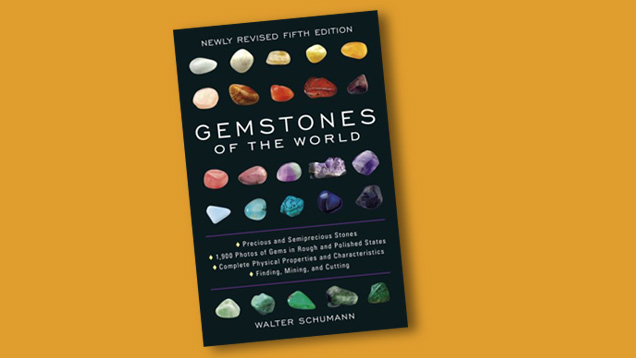Books: Gemstones of the World

The text begins with a brief mineralogical and gemological study, focusing on such topics as basic crystallography and crystal systems, hardness, refractive index, and other pertinent features of gem materials. Schumann largely focuses on minerals but does give proper descriptions of organic and synthetic materials as well. These first few sections serve as an excellent introduction to, or refresher on, many of the basic concepts that help make identification easier. The text is easily comprehensible to those at least somewhat familiar with the science of gemology, and it does a reasonably good job explaining the concepts for a novice. For someone completely new to the science, the jargon may be difficult, although Schumann attempts to bypass this issue by providing a brief list at the beginning of the book of terminology that may be unfamiliar.
Schumann devotes the most space, logically, to the most well-known and economically significant gemstones, such as diamond, sapphire, ruby, and emerald. Lesser-known and rare gems are not neglected, however, and he has compiled a fairly exhaustive list of gemstones, complete with color, hardness, density, refractive index, crystal system, and chemical composition.
At first glance, it would appear that little has changed since the fourth edition in 2009, and indeed most of the easy reference and good basic information is the same. Even the photographs, while very colorful and helpful, remain unchanged and could benefit from some modernization. New to this recent edition is a chapter discussing the symbolic and supposed medicinal significance of different gem materials. The author does approach this subject as a scientist, which is to say with great skepticism, and makes clear numerous times that there is no real proof of gemstones’ effectiveness in easing ailments beyond a well-intentioned placebo effect. It is a brief, interesting look at the historical and current importance of gemstones within a more mystical or homeopathic context, but probably not worth the price of repurchase.
This being the fifth edition, one would expect errors to be essentially nonexistent. Unfortunately, there were a few instances of misspelled gemstones (some of the charts refer to “peridote” rather than “peridot”) and grammatical errors. The brief description of diffusion treatment in corundum is not correct. He vaguely describes the treatment as creating a thin metal layer on the stone, similar to a foil backing. Although diffusion treatment commonly utilizes titanium, a metallic element, the connection between his description and actual diffusion treatment stops here. Additionally, unlike the other treatments he mentions, no detection method for diffusion treated corundum is given. Still, it should be noted that these errors are few and far between, and the book can still be used for referencing and basic information without trouble.
Gemstones of the World is a conveniently sized and organized reference book for both the casual and serious gemologist. Because it is fairly compact, it would be easy to take on field trips for use as a handy guide. The comprehensive listing of gem materials that includes many of the most important identifying features makes it useful for identifying both common and unusual gemstones. For those who already own the previous edition, there might not be much to gain from this latest version. For a first-time buyer, though, it would be a wise investment.



